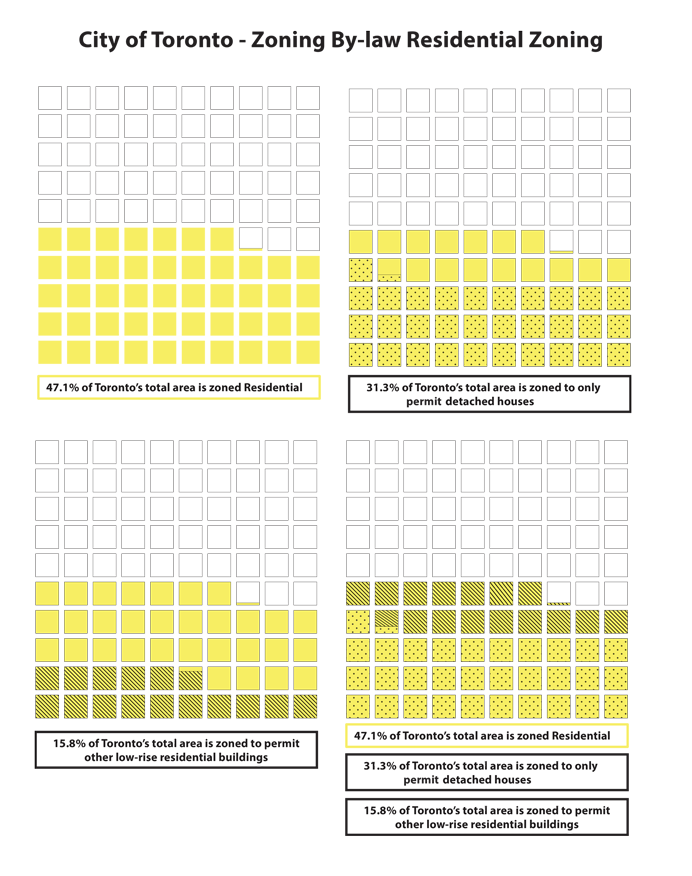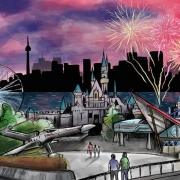The City of Toronto is currently studying ways to increase housing options/supply and planning permissions in areas of the city that are designated as Neighbourhoods in the Official Plan.
These are areas that are sometimes referred to as the “Yellowbelt”, because they are seeing very little intensification and, in a number of cases, actually losing population. (They’re also colored yellow in Toronto’s land use map.)
Ultimately, the goal is to encourage more “missing middle” type housing forms; housing that is denser than single-family homes but smaller in scale than say mid-rise housing like Junction House.
Here are a couple of interesting charts from the City. Based on Toronto’s Official Plan, “Neighbourhoods” make up 35.4% of the city’s land area.
In Toronto’s Zoning By-law, the “Residential” category makes up 47.1% of the city’s land area.
Digging deeper, 31.3% of Toronto’s total area is zoned for only detached houses — which would mean no missing middle type housing. But 15.8% of the city’s total area is already zoned to permit other types of low-rise residential buildings, such as duplexes and triplexes.
So why isn’t more of that happening?
As we’ve talked about before on the blog, the problem is that it is exceedingly difficult to make the math work on projects of this scale, which is why most developers don’t want to do them. The web of bureaucracy that you need to navigate in order to build anything in the city is also imposing for non-developers (and developers really).









 Maziar Moini, Broker of Record - Home Leader Realty Inc.
300 Richmond St. W., #300, Toronto, ON M5V-1X2
Maziar Moini, Broker of Record - Home Leader Realty Inc.
300 Richmond St. W., #300, Toronto, ON M5V-1X2


